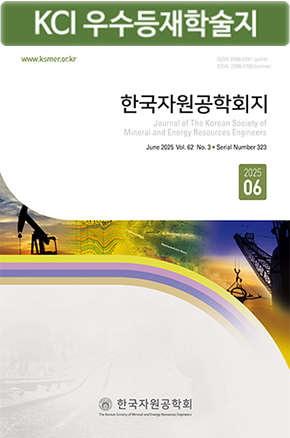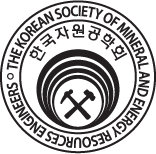Abstract
References
Information
Due to trend of nuclear power demand in the world, its plant facilities are expected to increase. Such expectation will raise possibilities for the growth of Korea export industry in nuclear power plant facilities. In the paper, with a view of Korea, we describe the way to increase exports of nuclear power plant facilities and study the possibility of exports them to China and India. Government, public, industry and financial sectors should be mutually supportive and share common goal to encourage exporting nuclear power plants facilities. To focus on common goal in each sector, the Master-plan should have been prepared in advance. After that, it should be selected favorable countries and facility parts for exporting. Then, the action plan should be settled for each country and promoted roles of all sectors. In the government and public sectors, they should strengthen mutual and international cooperation for export and provide relevant information in nuclear power. The roles of the financial sector should include various finance aid and risk management. And the last, industrial sector plays a role in expansion of the competitive power of prices, technologies, services and so forth, and establishment and promotion of some active marketing strategies.
전력수요 증가로 신규발전원에 대한 수요가 이어지는 최근의 세계동향은 우리나라 원자력발전의 수출산업으로서 성장가능성을 확대하고 있다. 이에 본 논문은 우리나라 원전산업의 수출 확대를 모색하고, 중국과 인도의 수출대상국으로서 가능성을 살펴보았다. 우리나라가 원전수출을 적극적으로 추진하려면 정부・공공부문, 금융부문, 산업부문 등이 공통의 목적의식을 갖고 역할을 수행해야 한다. 이를 위해서 우선 Master Plan을 작성해야하며, 관련당사자 및 관련부처의 협력 하에서 유망한 수출대상국과 수출상품을 선정하여 대상국별로 적합한 action plan을 수립하고, 관련부문들의 역할을 정립해야 한다. 정부・공공부문은 수출촉진을 위한 정보제공, 국제협력, 국내외 원자력문화 보급 등의 지원을 담당해야 한다. 금융부문은 다양한 금융기법으로 시장 특성에 맞는 차별화된 지원과 수출의 각 단계에서의 위험관리에 대한 지원도 필요하다. 산업부문은 가격, 기술 및 서비스경쟁력을 확충하고, 보다 적극적인 마케팅전략을 추진해야 한다.
- 김윤경, 2006, “원자력산업 수출촉진을 위한 경제주체별 역할”, 원자력산업, 제279호, 2006. 5.
- 배위섭, 임채영, 김윤경, 2005, “한국의 원자력발전설비수출 가능성 연구”, 한국지구시스템공학회지, Vol. 42(6), pp. 653-661.
- 산업자원부・한국전력공사‧전력연구원, 2005, 국가전력기술로드맵.
- 에너지경제연구원, 2005, “동북아 에너지협력 연구 - 동북아 방사성폐기물 처리・처분의 실태 및 협력방안 -”, 연구용역보고서.
- 한국수력원자력, 2001, “우리나라 원자력산업의 경쟁력 제고를 통한 해외진출방안에 관한 연구”, 연구용역보고서.
- DOE, 2003, international Energy Outlook 2003, DOE.
- DOE, 2004, “The Economic Future of Nuclear Energy”, DOE.
- ENS Nuc Net 각호.
- European Economic and Social Committee, 2004, “Nuclear Power and Electricity Generation”, European Economic and Social Committee.
- IAEA, 2005, “Report of the Expert Group: Multilateral Approaches to the Nuclear Fuel Cycle”, 22 February 2005, IAEA.
- IEA, 2001, “Nuclear Power in OECD”, IEA.
- IEA, 2005, “Projecting Costs Of Generating Electricity 2005 Update”, IEA.
- India Government, 2005, “Draft Report of Expert Committee on Integrated Energy Plan”, India Government.
- MIT, 2003, “The Future of Nuclear Power”, An interdisciplinary MIT Study, MIT.
- US DOE, 2002, “The Cost of Waste Disposal: Life Cycle Cost Analysis of Disposal of Department of Energy Low-Level Radioactive Waste at Federal and Commercial Facilities”, DOE.
- (株)エネルギーレビューセンター, エネルギー・レビュー, 各号.
- 日本原子力産業会議, 2006, 世界の原子力発電開発の動向2005年12月31日現.
- 日本電気事業連合会, 2003, モデル試算による各電源の発電コスト比較, 電気事業連合会.
- 日本電気新聞社, 日本電気新聞各号.
- 長継偉, 2004, 中国のエネルギー安全保障における原子力発電の位置付け, 日本エネルギー経済研究所.
- Publisher :The Korean Society of Mineral and Energy Resources Engineers
- Publisher(Ko) :한국자원공학회
- Journal Title :Journal of the Korean Society for Geosystem Engineering
- Journal Title(Ko) :한국지구시스템공학회지
- Volume : 44
- No :2
- Pages :159-168



 Journal of the Korean Society of Mineral and Energy Resources Engineers
Journal of the Korean Society of Mineral and Energy Resources Engineers








